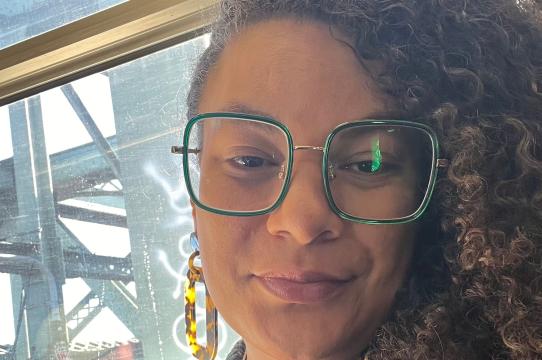mattie brice got into tech journalism in an unlikely way. She wanted to write about food, but she couldn’t afford a camera to take pictures of all those beautiful meals, so she started blogging and reviewing video games to get some practice.
Interactive media and artists interested brice. Most of all, she was curious about what the people often left out of that world — women, people of color, and queer people — were doing.
This was around 2011, and brice says there was a DIY movement going on at that time.
“It was like a digital arts reclamation of kind of 90s Riot grrls zine-ster type stuff,” she said. “I became interested in how different communities who don’t have access to tools and power make art, and what do they do with that art, and what kind of art do they make, and how is it different. And eventually I just kind of joined in. I was like, ‘Hey, I’m a part of this population and I’ll just do this too.’”
brice says she was interested in representation both in fictional games, and the people who consumed and made those games. She started to organize conferences and festivals and sit-ins.
“This is before DEI [diversity, equity, inclusion] was a term people used a lot, and it was basically a predecessor to those sorts of concerns,” brice said. “How do we speak out against the oppressive qualities of the industry towards marginalized folks and create our own communities so we can survive?”
brice says now her work is not so much about gamer culture, but more about play and how it can create social change.
In 2012, brice created the game, Mainichi, in just a week. In a TED talk, she said she made it for her best friend to help her understand brice’s life as a trans woman and the decisions she makes before leaving the house of how to present herself.
“It was kind of like a memoir game about a kind of a moment in my life,” brice said on the phone. “I made it and put it on the internet. Then it kind of grew a life of its own, and something I realized is that a lot of people thought that if they play a game from another person's perspective, they kind of understand that person's life. While I understand the good intention of the desire for empathy, it’s just not true.”
That led brice to make empathy machine.
“I created a performance where instead of playing the game, as you usually would on your computer by yourself, I used physical computing, and sensors and electronic fabrics in order to turn my body into a controller,” brice said. “In order to play my game, you’ve got to interact with my body while I was doing performances that were kind of harkening to the mundane rituals that I depicted myself in my game doing. It was meant to bring this tension to light that we desire empathy to vault social problems, but we only do it in a consumptive manner and the moment you're forced to reckon with the actual person, the difficulty of actually empathizing rises really high.”
brice grew up in Florida and got a B.A. in literature at Florida Atlantic University. She came out to the Bay Area for her career when she got involved in the tech world, and then moved to Brooklyn and got an M.A. in Integrated Digital Media at New York University.
Now she’s happy to be at UC Santa Cruz, and to join the newly formed Performance, Play and Design department, combining theater with digital media. She says it’s the only program she knows of like it in academia.
“Their commitment to being more activist oriented and including marginalized knowledge is a very explicit desire and mission of this new department,” she said. “That’s very exciting to me because it’s quite rare.”


